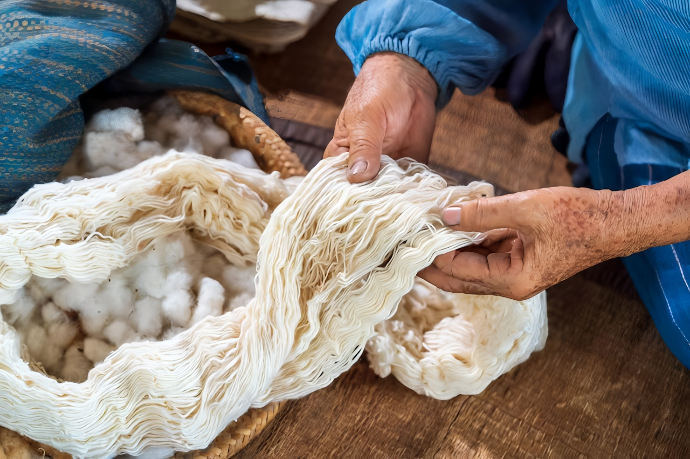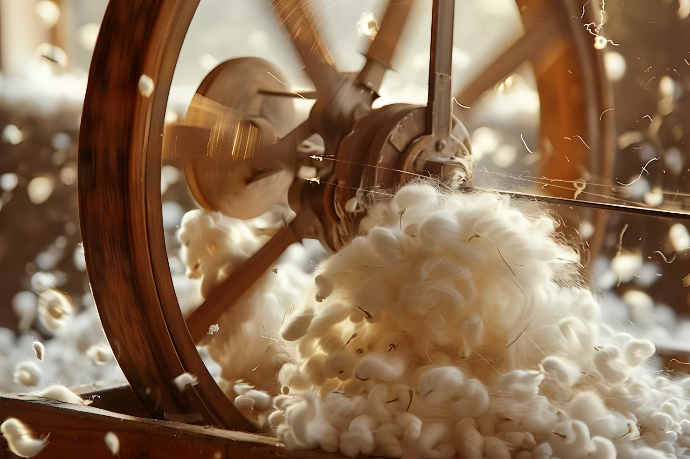Softness + wrinkle resistanceREasonAfter fibres are collected — whether from cotton fields, sheep farms, or chemical processes — they must be turned into something usable: yarn. Yarn is the thread-like strand that is later woven or knitted into fabric. This blog will walk you through the spinning process, explain yarn types, and show how blending helps combine the best qualities of different fibres.
Yarn
Yarn is a long, continuous length of interlocked fibres. It acts as the foundation of fabric making — without yarn, you can’t weave or knit textiles.

Fibre Preparation
Before spinning, fibres need to be:
- Cleaned (removing dirt, seeds, oil, or wax)
- Carded (combed and aligned)
- Drawn out (pulled into a long sliver for spinning)
In silk production, yarn comes from directly unwinding the cocoon — no carding needed.

Spinning
Spinning is the process of twisting the fibres together to create strength and form a usable strand. There are two major spinning methods:
A. Ring Spinning (Traditional & High Quality)
- Produces fine, soft yarn
- Ideal for cotton, viscose, and natural fibre blends
- Used in premium fabric
B. Rotor or Open-End Spinning (Faster & Cheaper)
- Makes coarser yarn
- Common in budget fabrics or denim
One strand of twisted fibres
Two or more single yarns twisted together for
durability
Core-Spun Yarn
A strong core (like spandex) wrapped in softer fibre (like cotton) for stretch fabrics
Blend
Cotton + Polyester
Wool + Nylon
Viscose + Spandex
Linen + Cotton
Reason
Softness + wrinkle resistance
Warmth + durability
Drape + stretch
Breathability + reduced stiffness

